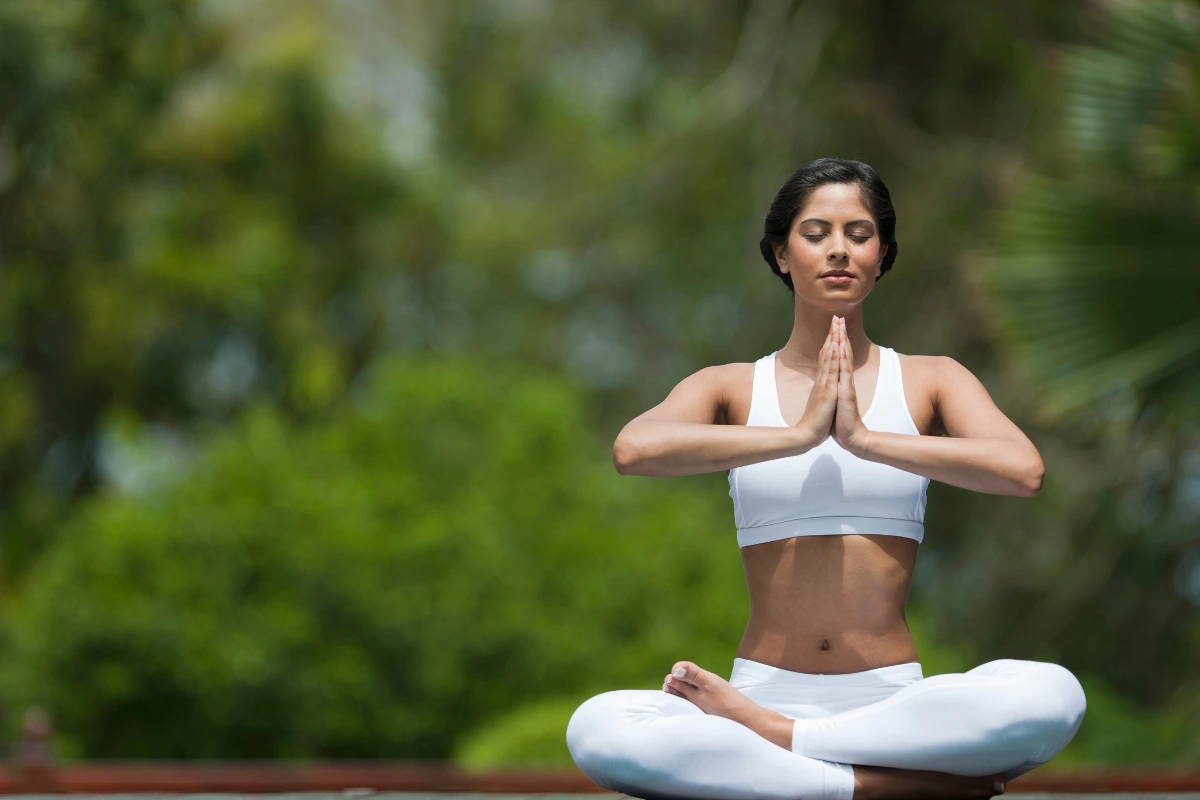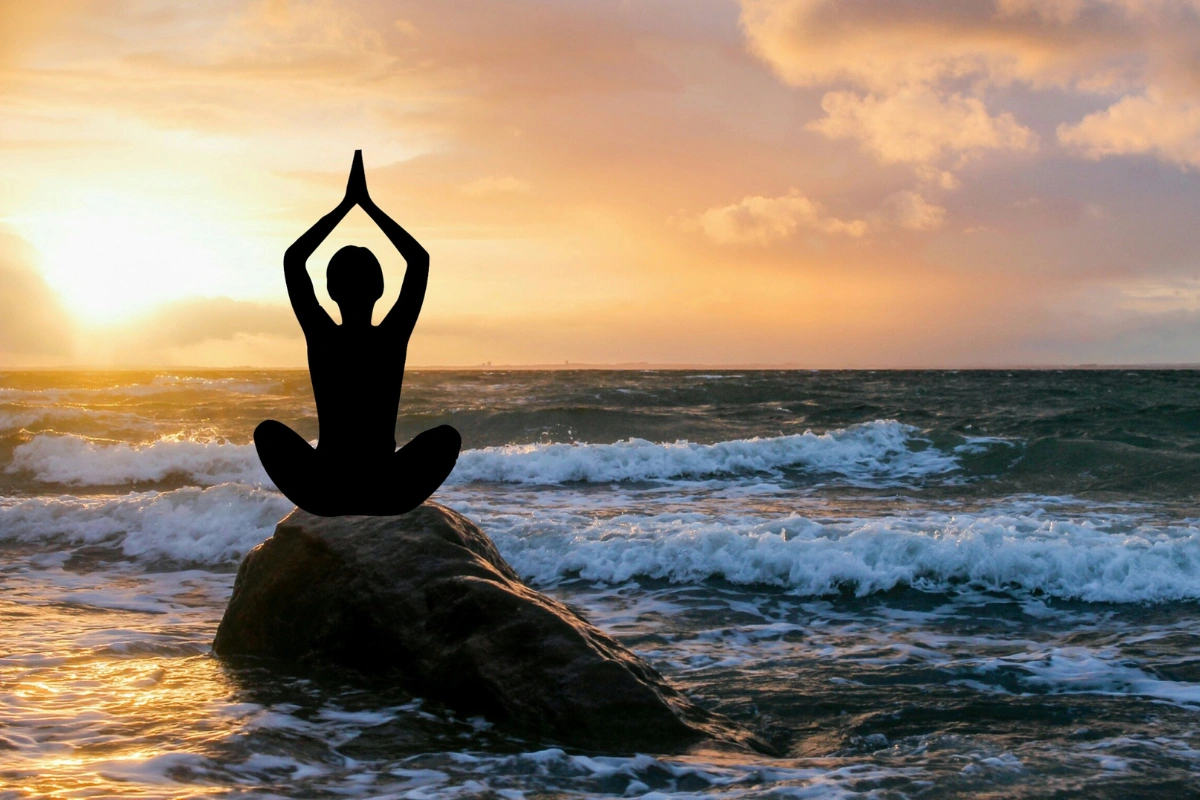Yoga is a centuries-old practice that has gained immense popularity worldwide for its numerous health benefits and holistic approach to well-being. From enhancing physical strength and flexibility to reducing stress and promoting mental clarity, yoga offers a wealth of advantages for practitioners of all ages and backgrounds. However, like any form of physical activity, yoga also comes with its own set of potential drawbacks and considerations. In this exploration, we will delve into the benefits and drawbacks of yoga, providing insight into how this ancient practice can positively impact our lives while also highlighting important factors to consider for a safe and fulfilling yoga experience.
What is yoga?
Yoga, at its core, is a multifaceted spiritual practice deeply rooted in a nuanced understanding of the mind-body connection. It encompasses both an art and a science, offering a pathway to holistic well-being. The term “Yoga” originates from the Sanskrit root ‘Yuj’, which conveys the notions of joining, yoking, or uniting. Within Yogic philosophy, the pursuit of Yoga leads towards a profound union between individual consciousness and the Universal Consciousness, fostering a state of perfect alignment between mind and body, as well as between humanity and nature.
Contemporary scientific perspectives echo these ancient teachings, suggesting that all elements of the cosmos are interconnected manifestations of the same fundamental quantum reality. In experiencing this interconnectedness firsthand, one enters a state of Yoga, earning the title of yogi and achieving a sense of liberation known as mukti, nirvana, or moksha. The ultimate aim of Yoga is Self-realization, transcending various forms of suffering to attain a state of freedom and harmony known as ‘the state of liberation’ (Moksha) or ‘freedom’ (Kaivalya). Through the practice of Yoga, individuals strive to live with freedom across all facets of life, prioritizing health and harmony.
Moreover, “Yoga” encompasses an inner science comprising a diverse array of methodologies through which individuals can realize this union and assert control over their destinies. Dating back to the ancient Indus Saraswati Valley civilization around 2700 B.C., Yoga stands as an enduring cultural legacy, catering to both the material and spiritual advancement of humanity. At its essence, Yoga Sadhana embodies fundamental humane values, serving as a guiding light towards a more fulfilled existence.

A Brief History and Development of Yoga
The journey of Yoga traces back to the dawn of civilization, steeped in ancient wisdom and evolving over millennia. It finds its genesis in the legendary figure of Shiva, often revered as the first yogi or Adiyogi, who imparted his profound knowledge to the seven sages beside the tranquil lake of Kantisarovar in the Himalayas.
From this sacred origin, the practice of Yoga disseminated across the globe, carried by the Saptarishis to distant lands such as Asia, the Middle East, Northern Africa, and South America. Remarkably, modern scholars have noted striking parallels in the ancient cultures worldwide, although it was in India where Yoga flourished most vibrantly. Agastya, one of the seven sages, propagated this yogic way of life across the Indian subcontinent, shaping its cultural fabric around the core principles of Yoga.
Archaeological evidence, including seals and artifacts from the Indus Saraswati valley civilization, indicates the presence of Yoga in ancient India. It permeated through various traditions, from Vedic and Upanishadic heritage to Buddhist, Jain, and tantric practices. The pre-Vedic period saw the rudimentary forms of Yoga integrated into daily rituals and spiritual pursuits, eventually crystallizing into a more structured system under the sage Maharshi Patanjali, who codified the Yoga Sutras.
The Classical period, spanning from 500 BC to 800 AD, marked a golden age in Yoga’s development, witnessing the elucidation of Yogic philosophy in texts such as the Bhagavad Gita and the Yoga Sutras. During this era, luminaries like Mahavir and Buddha expounded on the ethical and spiritual dimensions of Yoga, laying the groundwork for its subsequent evolution.
The Post-Classical period, from 800 AD to 1700 AD, saw the proliferation of diverse Yoga traditions, with influential figures like Adi Shankaracharya and the Natha Yogis shaping the landscape of Hatha Yoga. This era witnessed a flourishing of devotional practices alongside the refinement of physical techniques aimed at spiritual growth.
In the Modern period, spanning from 1700 AD to the present day, Yoga underwent a renaissance, spurred by the contributions of luminaries like Ramana Maharshi, Swami Vivekananda, and Paramhansa Yogananda. Raja Yoga, Vedanta, and Hatha Yoga gained prominence, with various schools and lineages emerging to disseminate Yoga’s teachings worldwide.
Today, Yoga enjoys widespread recognition for its myriad health benefits and spiritual insights, thanks to the efforts of renowned teachers such as Swami Sivananda, B.K.S. Iyengar, and Sri Aurobindo. As Yoga continues to evolve and adapt to contemporary needs, it remains a timeless path toward holistic well-being and self-realization for people of all backgrounds and beliefs.

Types and styles of yoga
There exists a diverse array of yoga types and styles, each offering unique approaches to physical, mental, and spiritual well-being:
- Ashtanga Yoga: Rooted in ancient teachings but popularized in the 1970s, Ashtanga Yoga emphasizes rapid movement linked to breath, employing a set sequence of poses.
- Bikram Yoga: Also known as hot yoga, Bikram Yoga takes place in heated rooms with high humidity, featuring 26 poses and breathing exercises performed in a controlled environment.
- Hatha Yoga: Serving as a broad term encompassing physical postures, Hatha Yoga classes typically provide a gentle introduction to fundamental yoga poses.
- Iyengar Yoga: Focusing on precise alignment in poses, Iyengar Yoga utilizes props like blocks and straps to facilitate correct posture and deepen the practice.
- Kripalu Yoga: This style encourages practitioners to develop self-awareness and acceptance, combining breathing exercises, gentle stretches, and individual poses with a focus on introspection.
- Kundalini Yoga: Centered around meditation and energy release, Kundalini Yoga incorporates chanting, breathwork, and meditation techniques to achieve specific outcomes.
- Power Yoga: Developed in the late 1980s, Power Yoga offers an active and dynamic practice inspired by Ashtanga Yoga, focusing on strength, flexibility, and endurance.
- Sivananda Yoga: Guided by a five-point philosophy encompassing proper breathing, relaxation, diet, exercise, and positive thinking, Sivananda Yoga utilizes 12 basic asanas preceded by Sun Salutations and followed by deep relaxation.
- Viniyoga: Prioritizing form, breath, adaptation, and sequencing, Viniyoga emphasizes personalized practices tailored to individual needs.
- Yin Yoga: Characterized by long-held passive poses targeting deep tissues, ligaments, and fascia, Yin Yoga promotes relaxation and flexibility through surrendering into poses.
- Prenatal Yoga: Tailored for pregnant individuals, Prenatal Yoga focuses on poses designed to support health during pregnancy and aid postpartum recovery.
- Restorative Yoga: Providing deep relaxation through gentle poses supported by props like blankets and bolsters, Restorative Yoga allows practitioners to sink into a state of relaxation without exertion.

Benefits of yoga
The practice of yoga offers a multitude of benefits for both the body and mind, contributing to overall health and well-being in numerous ways:
- Building Muscle Strength: Through a variety of poses and movements, yoga helps to strengthen muscles throughout the body, promoting better stability and mobility.
- Enhancing Flexibility: Regular practice of yoga gradually improves flexibility by stretching and elongating muscles, tendons, and ligaments, reducing the risk of injury and enhancing range of motion.
- Promoting Better Breathing: Yoga emphasizes conscious breathing techniques, such as diaphragmatic breathing and pranayama exercises, which enhance lung capacity, oxygenation of the blood, and overall respiratory function.
- Supporting Heart Health: Certain yoga practices, particularly those involving dynamic movements and cardiovascular engagement, can help to improve circulation, lower blood pressure, and reduce the risk of heart disease.
- Assisting in Addiction Treatment: Yoga has been shown to complement addiction recovery efforts by promoting self-awareness, stress reduction, and emotional regulation, thereby aiding in the management of cravings and withdrawal symptoms.
- Reducing Stress, Anxiety, Depression, and Chronic Pain: Mindfulness-based techniques incorporated into yoga practice, such as meditation and guided relaxation, help to alleviate symptoms of stress, anxiety, depression, and chronic pain, fostering a greater sense of calm and emotional well-being.
- Improving Sleep: The relaxation and stress-reducing effects of yoga can promote better sleep quality and duration, helping individuals achieve deeper and more restorative rest.
- Enhancing Overall Well-being and Quality of Life: By fostering a holistic approach to health and self-care, yoga cultivates a sense of balance, resilience, and vitality, leading to improved overall well-being and a higher quality of life.

Risks and side effects
While yoga is generally considered safe, especially under the guidance of a qualified instructor, it’s important to acknowledge potential risks and side effects associated with the practice:
- Risk of Injury: While serious injuries from yoga are rare, individuals may experience sprains, strains, or other minor injuries, particularly when attempting challenging poses or movements without proper instruction or awareness of personal limitations.
- Consideration for Medical Conditions: Certain medical conditions, such as pregnancy, bone loss, glaucoma, or sciatica, may require special consideration before starting a yoga practice. It’s advisable for individuals with such conditions to consult with a healthcare professional before beginning yoga, as certain poses or movements may need to be modified or avoided to prevent exacerbating their condition.
- Awareness of Limitations: Beginners should exercise caution and avoid attempting advanced poses or techniques beyond their current skill level. Poses like Headstand or Lotus Pose, as well as forceful breathing practices, should be approached with caution or avoided altogether until individuals have developed sufficient strength, flexibility, and understanding of proper alignment.
- Complementary to Medical Care: While yoga can offer numerous health benefits, it should not be seen as a substitute for conventional medical care. Individuals managing medical conditions or experiencing pain should continue to seek appropriate medical treatment and consult with healthcare professionals as needed.
- Listening to the Body: Practitioners should cultivate mindfulness and listen to their bodies during yoga practice, honoring any discomfort or pain as a signal to ease off or modify their approach. Pushing through discomfort can increase the risk of injury and hinder progress in the long run.
Summary
Yoga offers a myriad of benefits, including improved physical fitness, stress reduction, and mental well-being. However, practitioners should be aware of potential drawbacks such as the risk of injury and the need for caution with certain medical conditions. By understanding both the advantages and limitations of yoga, individuals can approach their practice mindfully and maximize its positive effects on their overall health and wellness.


Leave a reply